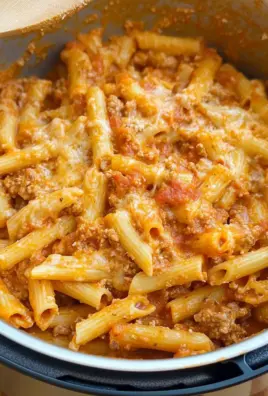Eggs Benedict is one of the most beloved brunch dishes, known for its combination of crispy, buttery English muffins, savory Canadian bacon, perfectly poached eggs, and a rich, creamy hollandaise sauce. This dish has been a staple of breakfast menus for over a century, offering a luxurious and satisfying meal that feels both elegant and comforting.
While it may seem like a complex dish to prepare, mastering Eggs Benedict at home is entirely possible with the right techniques. By following a few key steps and using high-quality ingredients, you can create a restaurant-quality meal in your own kitchen.

Why You’ll Love This Recipe
- Perfect for special occasions – Whether it’s a weekend brunch, a holiday breakfast, or a celebration, Eggs Benedict feels like a treat.
- Simple ingredients, big flavor – Made with everyday ingredients that, when combined, create something truly special.
- Versatile and customizable – Swap the bacon for smoked salmon, spinach, or avocado to suit different preferences.
Essential Tools and Equipment
To make the best Eggs Benedict, having the right tools can make the process easier and more efficient:
- Medium saucepan – For poaching the eggs.
- Slotted spoon – Helps lift poached eggs out of the water without breaking them.
- Small ramekins – For cracking eggs before poaching, ensuring a smoother process.
- Skillet – Used to sear the Canadian bacon.
- Baking sheet – Essential for toasting the English muffins under the broiler.
- Whisk – For making hollandaise sauce.
Ingredients
For the Poached Eggs:
- 8 large eggs
- 1 tablespoon white vinegar
For the Eggs Benedict:
- 8 slices back bacon (Canadian bacon)
- 4 English muffins, halved
- ¼ cup butter, softened
- 1 cup hollandaise sauce
- 1 tablespoon chives, finely chopped (for garnish)
Step-by-Step Directions
1. Poach the Eggs
Poaching eggs is one of the trickiest parts of this dish, but with the right method, you can achieve perfectly soft, runny yolks every time.
- Fill a medium saucepan with about three inches of water and bring it to a gentle simmer. The water should not be boiling.
- Add the white vinegar to help the egg whites coagulate more quickly.
- Crack an egg into a small ramekin. This makes it easier to gently slide the egg into the water.
- Stir the water in a circular motion to create a gentle whirlpool, then carefully pour the egg into the center.
- Let the egg cook for about four minutes for a soft, runny yolk or five minutes for a slightly firmer texture.
- Use a slotted spoon to carefully remove the egg and place it on a paper towel-lined plate. Repeat with the remaining eggs.
2. Prepare the English Muffins and Bacon
While the eggs are poaching, prepare the other components of the dish.
- Heat a skillet over medium-high heat. Add the slices of back bacon and cook for one to two minutes per side until lightly browned. Set aside.
- Preheat the oven broiler. Spread butter on each English muffin half and place them cut-side up on a baking sheet.
- Broil for one to three minutes, or until the muffins are golden brown and crisp. Keep a close eye on them to prevent burning.
3. Assemble the Eggs Benedict
Once all the components are ready, it’s time to assemble the dish.
- Place a toasted English muffin half on a plate.
- Add a slice of seared back bacon on top.
- Carefully place a poached egg over the bacon.
- Spoon warm hollandaise sauce generously over the egg.
- Garnish with finely chopped chives.
Serve immediately while the eggs are warm and the hollandaise sauce is silky and smooth.
Pro Tips for the Best Eggs Benedict
- Use fresh eggs – Fresh eggs hold their shape better when poached.
- Maintain a gentle simmer – Boiling water can cause the egg whites to break apart.
- Toast the English muffins well – A crispy base prevents the dish from becoming soggy.
- Serve immediately – Eggs Benedict is best enjoyed fresh, as the components do not hold up well when left to sit.
Best Side Dishes for Eggs Benedict
A well-balanced brunch includes a mix of flavors and textures. Since Eggs Benedict is creamy and savory, consider these side dishes for contrast and variety:
- Crispy Hash Browns – Golden and crunchy, these are a classic brunch staple. The crispy texture complements the soft poached eggs and creamy hollandaise sauce.
- Roasted Asparagus – Light and slightly charred, asparagus pairs well with hollandaise sauce. It also adds a fresh, slightly bitter contrast to the rich flavors.
- Fruit Salad – A refreshing fruit salad with berries, citrus, and melon balances the heaviness of Eggs Benedict with natural sweetness.
- Breakfast Potatoes – Diced and roasted with herbs, these potatoes add a hearty element to your brunch plate.
- Avocado Slices – Creamy and mild, avocado is a great alternative to hollandaise or an extra layer of flavor.
- Mixed Greens Salad – A simple salad with a light vinaigrette cuts through the richness and refreshes the palate.
- Smoked Salmon – A luxurious addition, smoked salmon enhances the dish with its salty, smoky notes. This variation is known as Eggs Royale.
- Mimosas or Fresh Orange Juice – A bright, citrusy drink is the perfect way to complement the creamy textures of the dish.
Common Mistakes & How to Avoid Them
Even experienced home cooks can struggle with making Eggs Benedict. Here are the most common mistakes and how to avoid them:
1. Overcooking or Undercooking the Poached Eggs
The ideal poached egg has firm whites and a runny yolk. The key is controlling water temperature. If the water is boiling, the eggs can break apart or overcook. Keep it at a gentle simmer and cook for four minutes for soft yolks or five minutes for a slightly firmer texture.
2. Not Adding Vinegar to the Poaching Water
White vinegar helps the egg whites coagulate quickly, preventing them from dispersing in the water. If you find your eggs breaking apart, a teaspoon of vinegar can make a big difference.
3. Skipping the Ramekin Step
Cracking the eggs directly into the water can lead to uneven shapes. Instead, crack each egg into a small ramekin first, then gently pour it into the simmering water. This method ensures better control and consistency.
4. Using Cold Eggs
Cold eggs can lower the water temperature too quickly, resulting in uneven cooking. Bringing the eggs to room temperature before poaching helps them cook evenly and prevents sudden temperature shocks.
5. Using Low-Quality English Muffins
Since English muffins provide the base of the dish, their texture and flavor are important. Choose high-quality, bakery-style English muffins or toast them well to avoid sogginess.
6. Not Toasting the English Muffins Properly
Soft muffins absorb hollandaise sauce too quickly, making them mushy. Toasting them until golden brown ensures they hold up well under the eggs and sauce.
7. Overcooking the Bacon
Back bacon, or Canadian bacon, can become too dry if overcooked. A quick sear on medium heat for one to two minutes per side is enough to develop flavor without drying it out.
8. Making Hollandaise Sauce Too Far in Advance
Hollandaise sauce is best served warm and fresh. If left sitting for too long, it can separate or become too thick. If you must prepare it in advance, keep it warm in a thermos or use a double boiler to gently reheat it.
How to Make Eggs Benedict Like a Pro
- Use fresh eggs – Fresher eggs hold their shape better when poached.
- Keep the water at a gentle simmer – A rolling boil will cause the eggs to break apart.
- Make hollandaise sauce just before serving – It tastes best when fresh and warm.
- Warm the plates – Serving Eggs Benedict on a warm plate helps maintain temperature and prevents the sauce from cooling too quickly.
- Assemble quickly – Once the eggs are poached and the muffins are toasted, work fast to prevent any part of the dish from getting cold.
Storage and Reheating Tips
Storing Poached Eggs
Poached eggs can be made ahead of time and stored for later use.
- How to Store: Place the poached eggs in a bowl of cold water and refrigerate for up to five days. This keeps them fresh without affecting texture.
- How to Reheat: Bring a pot of water to a gentle simmer and add the eggs for about one minute, just until warmed through. Avoid boiling the water, as this can overcook the yolks.
Storing Hollandaise Sauce
Hollandaise sauce is best when freshly made, but if necessary, it can be stored with care.
- How to Store: Transfer the sauce to an airtight container and refrigerate for up to two days.
- How to Reheat: Warm the sauce slowly using a double boiler, whisking constantly to prevent curdling. Do not microwave, as this can cause separation.
Storing Toasted English Muffins
If you need to toast the English muffins ahead of time:
- How to Store: Keep them in an airtight container at room temperature for up to one day.
- How to Reheat: Toast again in the oven at 350°F (175°C) for a few minutes until warm and crisp.
Common Issues and How to Fix Them
Hollandaise Sauce is Too Thick
If the sauce thickens too much, whisk in a teaspoon of warm water or lemon juice until the desired consistency is reached.
Hollandaise Sauce is Too Thin
If the sauce is too runny, whisk it over low heat for a few minutes until it thickens, or slowly add more melted butter while whisking.
Egg Whites Spread Too Much in Water
This usually happens with older eggs. Use the freshest eggs possible, and add vinegar to the water to help the whites hold their shape.
Egg Yolks Overcooked
To keep the yolks runny, remove poached eggs from the water at four minutes. If they are overcooked, try reducing the cooking time or reheating stored poached eggs gently.
Frequently Asked Questions
Can I make hollandaise sauce ahead of time?
Yes, but it is best served fresh. If you need to store it, keep it in an airtight container in the fridge for up to two days and reheat it slowly using a double boiler.
What is the best way to poach multiple eggs at once?
Use a wide, shallow saucepan and poach eggs in batches. Avoid crowding them, and remove each egg as soon as it is done.
Can I use a different type of bread instead of English muffins?
Yes, try toasted brioche, sourdough, or gluten-free bread for a variation.
Is there a way to make hollandaise sauce without a double boiler?
Yes, a blender can be used. Blend egg yolks and lemon juice, then slowly drizzle in melted butter while blending until thick and creamy.
Can I make Eggs Benedict without bacon?
Absolutely. Try smoked salmon for Eggs Royale, sautéed spinach for Eggs Florentine, or avocado for a vegetarian option.
Final Thoughts
Eggs Benedict is a brunch classic that, with practice, can be mastered at home. By following the right techniques and using fresh ingredients, you can create a restaurant-quality dish that is perfect for any special occasion. Whether you stick to the traditional version or explore different variations, the key is balancing textures and flavors to achieve a perfectly rich and satisfying meal.
Eggs Benedict
Ingredients
For the Poached Eggs:
- 8 large eggs
- 1 tablespoon white vinegar
For the Eggs Benedict:
- 8 slices back bacon Canadian bacon
- 4 English muffins halved
- ¼ cup butter softened
- 1 cup hollandaise sauce
- 1 tablespoon chives finely chopped (for garnish)
Instructions
Poach the Eggs:
- Bring a pot of water to a boil. Add the vinegar, then reduce the heat to a gentle simmer.
- Crack an egg into a small ramekin, then gently drop it into the water. Repeat with three more eggs.
- Turn off the heat, cover the pot, and let the eggs cook in the hot water for about 4 minutes, or until the whites are set and the yolks are still runny.*
- Use a slotted spoon to remove the eggs and place them on a paper towel-lined plate. Repeat with the remaining eggs.
Prepare the Eggs Benedict:
- Heat a skillet over medium-high heat. Add the slices of back bacon and cook for 1-2 minutes per side until browned. Set aside.
- Set your oven to broil. Spread butter on each English muffin half and place them cut side up on a baking sheet.
- Broil for 1-3 minutes, or until golden brown.
- To assemble, place a slice of back bacon on each toasted muffin half. Carefully place a poached egg on top, then spoon hollandaise sauce over the egg. Garnish with chives.




Leave a Comment